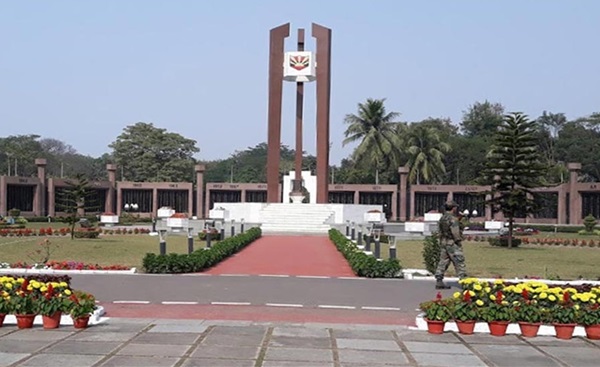Why in the NEWS?
- Fort William, the headquarters of the Eastern Army Command, has been renamed Vijay Durg.

Key Points:
- The Indian government is moving rapidly towards removing colonial-era traditions and symbols in the armed forces and connecting them with Indian historical heritage.
- As part of this initiative, the Kolkata-based Eastern Army Command Headquarters has been renamed from "Fort William" to "Vijay Durg".
What will you read next in this topic?
- Key changes and their significance
- Initiative to remove colonial remnants
- Need to change Indian military doctrine
- Other major changes
- Review Report on Colonial Traditions
- Colonial Traditions and the Armed Forces – A Review
- Impact of colonial traditions
- Efforts towards indigenisation
- Construction and History of Fort William
- Importance of Fort William
Key changes and their significance
Fort William renamed as Vijay Durg
- Fort William was built by the British in 1781 and was named after King William III of England.
- The new name "Vijay Durg" is inspired by a historic fort located on the Sindhudurg coast of Maharashtra, which was a major base of the Maratha Navy under Chhatrapati Shivaji Maharaj.
- This change is an important step towards restoring India's military heritage and glory.
Other name changes
- Kitchener House → now "Manekshaw House" (in honour of Field Marshal Sam Manekshaw).
- St. George's Gate → now "Shivaji Gate".
Initiative to remove colonial remnants
- The Indian Armed Forces are incorporating Indian traditions by removing British colonial traditions.
- Prime Minister Narendra Modi has described this campaign as "liberation from the mentality of slavery".
Need to change Indian military doctrine
- In March 2022, Prime Minister Modi, while addressing top military officials in Kevadia, Gujarat, said:
- It is necessary to promote indigenous military equipment and weapons.
- Indian traditions and doctrines should be incorporated in military strategies.
- It is necessary to end colonial systems that have become irrelevant.
New flag of Indian Navy
- In September 2022, the Indian Navy adopted a new naval flag.
- It added an octagonal design inspired by the seal of Chhatrapati Shivaji Maharaj, making it free from colonial identity.
Other major changes
- Indian tunes are now played in the Beating Retreat ceremony, reducing the colonial influence.
- Military dress and ceremonial traditions are being reviewed to reflect Indianness.
- Military establishments, gates and buildings are being named in line with Indian military history and traditions.
Review Report on Colonial Traditions
- At the Combined Commanders' Conference held in Lucknow in September 2024,
- Defence Minister Rajnath Singh released a publication titled "Colonial Traditions and Armed Forces - A Review".
Colonial Traditions and the Armed Forces – A Review
Colonial Legacy in the Armed Forces
- Colonial rulers designed military structures to serve their imperial interests, prioritising control over the local population over national defence.
- Some of the key colonial traditions that continue to this day are:
- Military hierarchy and organisation:
- The militaries of many post-colonial countries still follow rank structures, doctrines and administrative systems established in the colonial era.
- Ceremonial traditions:
- British military customs such as parade drill, beating retreat ceremonies and regimental traditions have been continued.
- Symbols and nomenclature:
- The names and insignia of various military institutions, awards and even buildings still date back to the colonial era.
- Legal frameworks:
- The military justice systems of many countries are still based on laws enacted during the colonial period, creating obstacles to modernisation.
Impact of colonial traditions
- While some colonial traditions provide discipline and stability, they also present several challenges:
- Lack of national identity: Dependence on colonial customs can prevent the military from fully adopting indigenous traditions.
- Strategic dissonance:
- Colonial military doctrines were designed for imperial interests, which are not compatible with the security needs of modern independent nations.
- Psychological and cultural differences:
- Maintaining colonial symbols does not match the military identity of an independent nation.
Efforts towards indigenisation
- Several countries, especially India, have made significant efforts to decolonise their military. Some of the major initiatives are:
- Renaming military institutions: Fort William in Kolkata in India was renamed "Vijay Durg".
- Reform of military traditions:
- The Indian Navy replaced its colonial-era flag with a new design inspired by the seal of Chhatrapati Shivaji Maharaj.
- Adopting indigenous military doctrines:
- Prioritising self-reliance in defence production and strategies.
- Changes in ceremonial practices:
- British tunes were replaced by Indian compositions in the Beating Retreat ceremony.
- India is constantly working towards freeing the armed forces from colonial mind-set and redefining military traditions in accordance with Indian values.
- The transformation of Fort William into Vijay Durg and other improvements are part of this process.
- This initiative will be helpful in strengthening national self-respect, self-reliance and the spirit of "Atmanirbhar Bharat".
History of Fort William
Initial Construction (1696-1702)
- The first version of Fort William was built by the British East India Company in 1696.
- The main purpose of this construction was to ensure the safety of the company's trading centres and soldiers in Bengal.
- This fort was built of wood and mud and was mainly used to protect the company's trading establishment.
- Its construction was completed in 1702 and it was considered an important centre of British power in Bengal.
Invasion of Nawab Siraj-ud-Daulah and the "Black Hole of Calcutta" incident (1756)
- In 1756, Siraj-ud-Daulah, the Nawab of Bengal, attacked Fort William over the growing power and fortification activities of the British East India Company.
- The Nawab's army captured the fort and captured many British officers and soldiers.
- These captives were confined in a narrow room, which led to the death of about 123 British soldiers due to suffocation and extreme heat.
- This incident is known as the "Black Hole of Calcutta", which is seen in history as a turning point of British rule.
Battle of Plassey and Reconstruction of Fort William (1757-1781)
- The British army defeated Nawab Siraj-ud-Daulah in the Battle of Plassey in 1757, after which the British established their control over Bengal.
- After the war, the British decided to rebuild Fort William, so that such incidents could be avoided in the future.
- The reconstruction of the fort was completed in 1781, in which it was designed as a strong brick and stone fort.
- The new fort was equipped with modern military facilities, spacious barracks, cannons and supply centres.
Importance of Fort William
Military and Administrative Centre
- Fort William was a major military and administrative centre during British rule.
- It became the headquarters of the British Indian Army and from here military activities were conducted all over India including Bengal.
- The main office of the British Governor General was also located in this fort.
- Through Fort William, the British rule strengthened its hold in Bengal and maintained control over the entire Indian subcontinent.
Defence of the British Empire in India
- Fort William was very important from a strategic point of view as it was located on the banks of the Hooghly River and protected the sea trade routes.
- This fort helped the British army to conduct military operations smoothly in Bengal, Bihar and Orissa.
- It was one of the safest and most protected cantonments of the British Army in India.
- After India's independence (1947), Fort William became the headquarters of the Indian Army's "Eastern Command".
|
Q. What is the main purpose of removing colonial military traditions?
(a) Reducing military expenditure
(b) Adding new technology to the military organization
(c) Strengthening national identity and sovereignty
(d) Joining international military alliances
|



